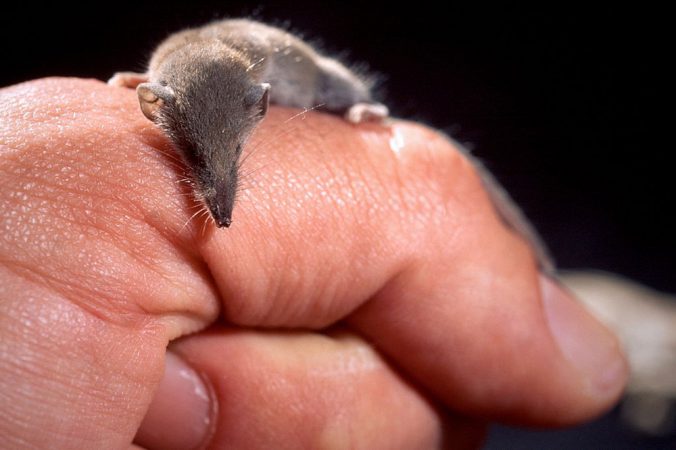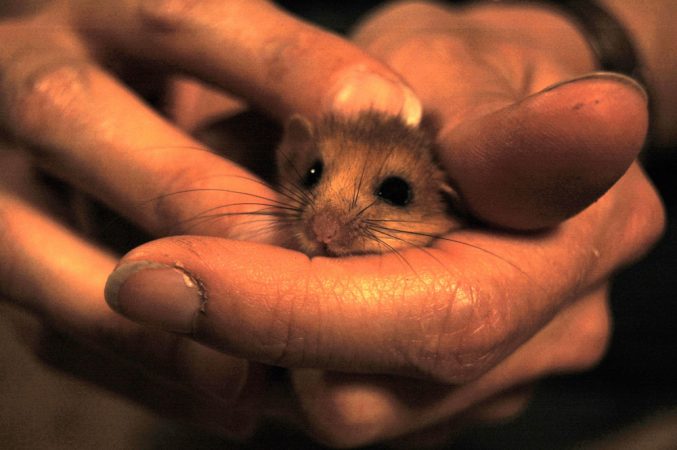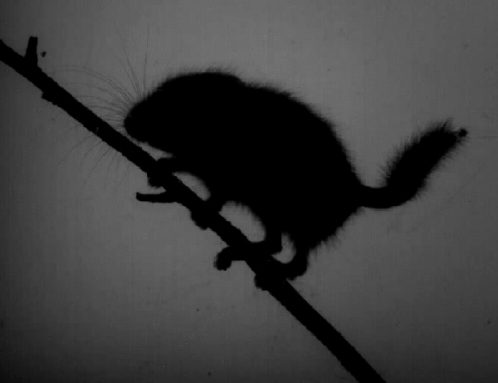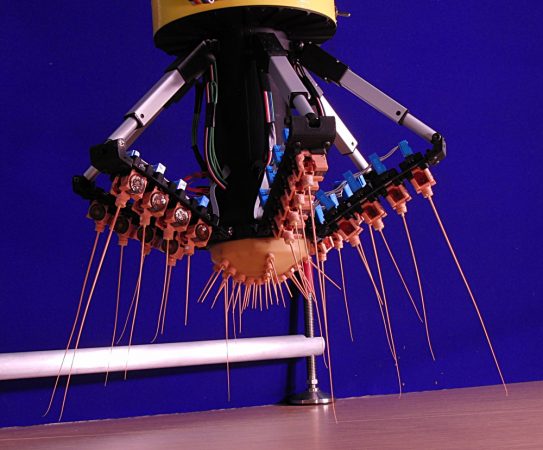By a whisker
Hardly a fad: Some facial hair serves important functions, scientists find

Have you ever looked across the breakfast table at the stubble on your dad’s unshaven face and thought, “Whiskers are weird“?
Well, whiskers are unusual, but not uncommon. In fact, almost all mammals, from walruses to wombats, have whiskers. For many animals, the special hairs that scientists call vibrissae (vi-BRI-see) serve important purposes.
Vibrissae differ from regular hair or fur. First, whiskers are thicker and often longer. You probably noticed that if you ever stroked the face of a cat or dog. Second, the follicles that anchor vibrissae in the skin have many more nerve and blood vessel connections than do the follicles that hold regular hair. The specialized nerves, called mechanoreceptors (me-KAN-oh-reh-SEP-terz), make whiskers sensitive to touch, just like your fingertips.
Since whiskers stick so far out, they extend an animal’s sense of touch. Moving them can help too. Fortunately, your dad can’t move his whiskers. Horses and cows can’t either. Many mammals, including seals and cats, can sweep their vibrissae back and forth. Others animals, like rats, mice and shrews, swish their whiskers in all directions, just like a cook’s whisk.
The motion and sensitivity of whiskers provide these animals with valuable information about whatever they touch. Many scientists have been probing that information. Their research has uncovered some big surprises — including in one of the world’s smallest mammals.
Shrews whisk
Etruscan (ee-TRUSK-kan) shrews are tiny, whisker-faced mammals. An adult weighs about 1.8 grams (six hundredths of an ounce), or less than a half-teaspoon of sugar. These tiny shrews have huge appetites. To stay alive, they need to eat more than their bodyweight each day.
Unfortunately, the crickets that shrews love to eat are tricky to capture. Crickets are speedy, springy and nocturnal, or active only at night. So how do Etruscan shrews catch enough crickets to stay alive? A team of scientists led by neurobiologist Michael Brecht at the Erasmus Medical Center in the Netherlands wanted to find out. (A neurobiologist studies features of nerves and their functions.)
In 2006, the team used a high-speed video camera to film Etruscan shrews hunting. An infrared light, invisible to the shrews, illuminated the scene.
The team first noticed that the shrews caught crickets just as easily if the insects were still or moving. This meant the shrews didn’t rely on movement to detect prey. The scientists then noticed the shrews almost always bit the crickets in the very same spot, right behind the head. This precision impressed the scientists. How did the shrews do it?

To learn more, the scientists watched shrew videos in slow motion. The team determined the shrews flicked their whiskers back and forth about 20 times per second when attacking. The shrews moved their heads too, adding to the movement of their whiskers. Over and over, the shrews used their whiskers to brush the crickets. That repeated contact suggested vibrissae helped the shrews find crickets in the dark.
To test the importance of whiskers, the scientists trimmed them. First, the team cut the microvibrissae, or smaller whiskers, around the shrews’ mouths. How did the shrews cope? Not so well: They went from catching nearly every cricket to catching roughly half. However, trimmed shrews still aimed their teeth accurately. Most of their bites continued to land right on target, just behind the head.
Next, the scientists shaved the larger whiskers, or macrovibrissae, off a new set of shrews. Before the shave, these shrews had successfully captured nearly every cricket. After the shave, their success rate also dropped to half. Furthermore, losing the macrovibrissae also reduced the animals’ biting accuracy. These shrews landed bites all over the crickets, not just behind their heads.
Scientists concluded that without their long and short whiskers, wild shrews might not be able to capture enough prey. “They survive whisker trimming in captivity,” says Brecht, “but this might be because we supply them with lots of easy prey.”
Sealing the deal
Other whiskered animals use their vibrissae to locate prey without even touching it directly. Among them is the harbor seal, which has highly sensitive vibrissae. How sensitive? Ten times more nerve endings surround a seal whisker than a rat whisker.
Sensory biologist Wolfe Hanke of the University of Rostock in Germany and his colleagues worked with a trained harbor seal named Henry to study whisker sensitivity. In 2000, the team discovered that Henry’s whiskers allowed him to detect a fake fish’s watery trail 35 seconds after it had swum past.
Hanke suspected Henry’s whiskers could do even more. The scientist knew different fish created different trails in the water, depending on their size, motion and speed. Hanke hypothesized that Henry could use his whiskers to “read” this information in deciding whether a passing fish was worth chasing.
To test this hypothesis, the scientists set up an experiment. Instead of fake fish, the team used paddles of different sizes and shapes attached to a motorized device. Each paddle stirred the water in a particular way — just as different fish would. Could Henry tell apart the different paddles, just from the way they moved water? First, the seal had to cooperate.
“Henry most of the time has fun participating in the experiments, especially when the tasks are not too hard to solve,” says Hanke. “But as the experiment becomes more difficult, he becomes frustrated, sometimes refusing to take part. After a break, he usually agrees to go back to work.”
To begin, scientists put a blindfold and earmuffs on the seal. Henry then waited while the scientists used the device to move a paddle through the water. The scientists then turned off the motor, removed Henry’s earmuffs and allowed the seal to stick his face in the water. There, the seal could feel the paddle’s wake with his whiskers. The scientists had trained Henry to touch a yellow ball with his nose for each new and different paddle he sensed. Correct choices earned Henry a herring snack.
What did Henry’s whiskers reveal?
When scientists moved two different paddles at the same speed, Henry could easily tell them apart, just by their wake. In fact, the seal could detect size differences down to 3.6 centimeters (1.4 inches). When scientists moved the paddles at different speeds, Henry still did a pretty good job, detecting size differences down to 4.3 centimeters.
Henry had the easiest time with flat paddles, distinguishing their wake eight out of every 10 tries. The seal did almost as well with wavy and cylindrical paddles, identifying them six in every 10 tries.
Henry’s ability to distinguish among paddles of different sizes and shapes, even when they moved at different speeds, led the scientists to believe whiskers help seals make smart choices when hunting in the wild.
“The perception of water movements by the whiskers is the most important source of information for harbor seals,” Hanke says. “The water is dark and turbid. They see with their whiskers, not with their eyes.”
Why have whisking whiskers?
Not all animals use their whiskers to find food. Some use whiskers to “see” in the dark. Clues regarding the usefulness of whiskers for navigation come from research on why some creatures whisk.
Robyn Grant, at the University of Sheffield’s Active Touch Laboratory, studies how different rodents and other small animals use their whiskers. She and her team have studied at least three species of mice and voles, along with brown rats, hazel dormice and water shrews.

“I myself really like to find out why animals do what they do. So why they have evolved certain strategies for survival is really interesting to me,” explains Grant.
Like Brecht, the Etruscan-shrew researcher, Grant also uses a high-speed video camera to capture and later watch in slow-mo what different animals do with their whiskers. The cameras can capture 500 frames, or individual pictures, per second.
Grant’s experiments reveal that dormice whisk their whiskers up to 25 times per second, moving them up, out and straight ahead. Since these nocturnal rodents spend summer nights scurrying in trees, whisking their vibrissae against branches allows them to feel their way around when darkness falls.
“Dormice push their whiskers very far forward. We think this may be really useful when they climb, so they can scan the area in front of their feet and inspect gaps and branch crossings,” Grant explains.

Rats and robots
Another rodent, the rat, also uses its whiskers to sense its surroundings in fine detail. While humans stroke to determine textures, press to judge shapes and squeeze to assess hardness, rats whisk.
About 30 vibrissae flank either side of a rat’s nose. Years of research by scientists around the world have revealed some amazing things about those whiskers. With just one to three touches, and in just one-tenth of a second, rats can use their whiskers to determine the texture of a surface.
And that’s not all. Rats also can distinguish between openings that differ by only 0.3 centimeter (a little over a tenth of an inch). They can tell the difference between posts set 24 hundredths of a centimeter apart. And a rat’s whiskers can tell a smooth surface from one with grooves as shallow as three thousandths of a centimeter. So whiskers make navigating in the dark a snap for rats.
That impressive skill has challenged some scientists to create robots that can do the same.
One international team has spent more than four years building robotic devices equipped with sensors that mimic the shape, spread and movement of rat whiskers. The BIOmimetic Technology for vibrissal ACtive Touch (BIOTACT) team’s G2 sensor attaches to a robot arm that sweeps over objects below it. Meanwhile, its Shrewbot pursues moving prey across the floor, using only touch.

The G2 sensor and Shrewbot both use artificial whiskers to distinguish between objects of different shapes and textures. “They actively move their whiskers back and forward to explore their world,” explains team member Charlie Sullivan, an engineer in the Bristol Robotics Laboratory in the United Kingdom. “Shrewbot can also find its way around in the dark, using only this sense of touch. It can even detect and follow other moving robots using just the tactile sensations from its whiskers.”
One day, whiskered robots may dart about in dark, dusty or smoky environments. For now, these machines still can’t touch the skill many whiskered animals have when it comes to feeling their way around.
“Within the controlled conditions in our lab the robots work very well. However, there is still a lot of work to do before they are ready to work in the real world,” explains Sullivan. “Most robots that work in the real world use lots of other kinds of sensors, like laser rangefinders and vision systems. We’re attempting to create robots that can work effectively with just the sense of touch.”
Power Words
vibrissa (plural vibrissae) The touch-sensitive hairs, or whiskers, that grow on the faces and heads of many mammals.
follicle The cells and other tissues that surround hair at its root.
mechanoreceptor Specialized cells that respond to touch.
whisk To move rapidly, often in a circular way.
infrared Electromagnetic radiation of a wavelength greater than the red portion of the visible light spectrum.
nocturnal Active at night.
turbid Cloudy.
Word Find (click here to print puzzle)








